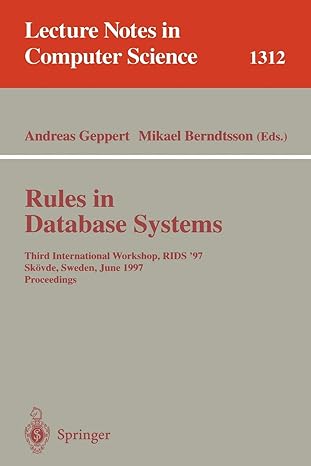Answered step by step
Verified Expert Solution
Question
1 Approved Answer
Lab 2 The Linux Terminal 1 . Introduction The aim of this lab is to get you familiar with the Linux command line interface (
Lab The Linux Terminal
Introduction
The aim of this lab is to get you familiar with the Linux command line interface CLI Before
proceeding, you must install a Linux environment on your machine via the method described in "Linux
running in windows". This document can be found in the OPS Week module on Full Sail Online FSO
Once you have Linux running on your machine, you may proceed with the steps below. You will
want to keep the two appendices handy as you go through these steps.
Directory Management And File Manipulation
Open a Linux terminal session your choice of method
Use the man or help command to look at usage and options for cd pwd and ls
For example: man ls and help cd
Use the commands cd and ls to explore the directories and their content on your system. Use a
variety of relative and absolute paths.
Common directories to look at:
dev All devices the operating system can see.
etc Configuration files for the system and user programs.
varlog Stores log files for various system programs.
bin Application program files.
lib Library files.
usrbin Application program files associated with a specific user.
usrlib Library files associated with a specific user.
boot Linux kernel files andor boot loader files.
Use Tab Completion to make your life easier. When you start typing a path in terminal, you can hit
the Tab key to auto complete the path. If you dont get an option that means you have more than one
option. Hitting Tab again brings up all matching options. Continue typing to narrow the option and
hit Tab again and it should autocomplete the path.
Use the file command to examine some of your files and directories.
Use man to look at the syntax for the ls command.
Use ls to list the files in some of your directories. Now do it so it shows hidden files and directories.
Use man k to search the manual for some of the commands listed in the Common UnixLinux
Commands reference document posted along with this lab in FSO.
Look up mkdir in the manual.
Use cd to go to your home directory. From there, do the following:
Makeadirectory called OPS. Remember use pwd and LS to see the results.
Makeadirectory inside OPS called "files" using the mkdir options.
Move to the "files" directory and make an empty file using touch called "empty".
Use cp to makeacopy of "empty" in your home directory.
Move back to your home director
Step by Step Solution
There are 3 Steps involved in it
Step: 1

Get Instant Access to Expert-Tailored Solutions
See step-by-step solutions with expert insights and AI powered tools for academic success
Step: 2

Step: 3

Ace Your Homework with AI
Get the answers you need in no time with our AI-driven, step-by-step assistance
Get Started


